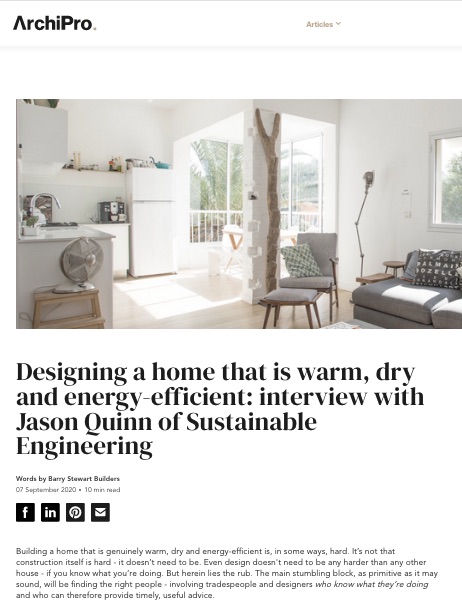Last year, a builder in the South Island called up Jason Quinn, Sustainable Engineering’s founding director, and asked to interview him. Much later, a story showed up on Achipro. It rambles a bit but has some good anecdotes and a punchy opening proposition:
“The main stumbling block [to building a home that is genuinely warm, dry and energy-efficient], as primitive as it may sound, will be finding the right people—tradespeople and designers who know what they’re doing and who can therefore provide timely, useful advice.”

The section on computer modelling is interesting. Not all the energy models Jason and his team create are for buildings targeting Passive House certification; some are for projects with specific site challenges. One was an infill development in Wellington, directly south of a four-storey apartment building and jammed up against the northern boundary. “Once we put the building in a computer model, it became obvious that the site gets no sunshine at all for about three months of the year,” Jason explained. For this building, north-facing glass was pointless, it wouldn’t add any heat—all through winter when you actually want the solar gain, there wasn’t any. As a result, the house needed to be built as if it were in Queenstown: triple-glazed windows and more insulation.
Sustainable Engineering also gets calls from homeowners wanting initial design advice, “seeking clarity and assurance so as to not be talked into—either by the architect or the builder—buying more expensive products than is necessary.” Jason makes the point that the sum is more important than the parts; high-performance components and systems are good but it’s essential to understand how they are all going to work together.
He’s previously written about the pitfalls of well-meaning but uninformed design that cobbles together different components found in Passive House buildings but skips the energy modelling to test how it all works together. That’s a gamble that has resulted in a couple of expensive ovens in Auckland: read more in his now rather famous “That’s Enough Cargo-Cult Architecture” essay.